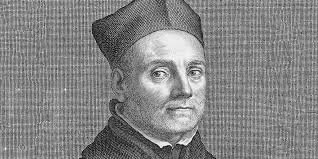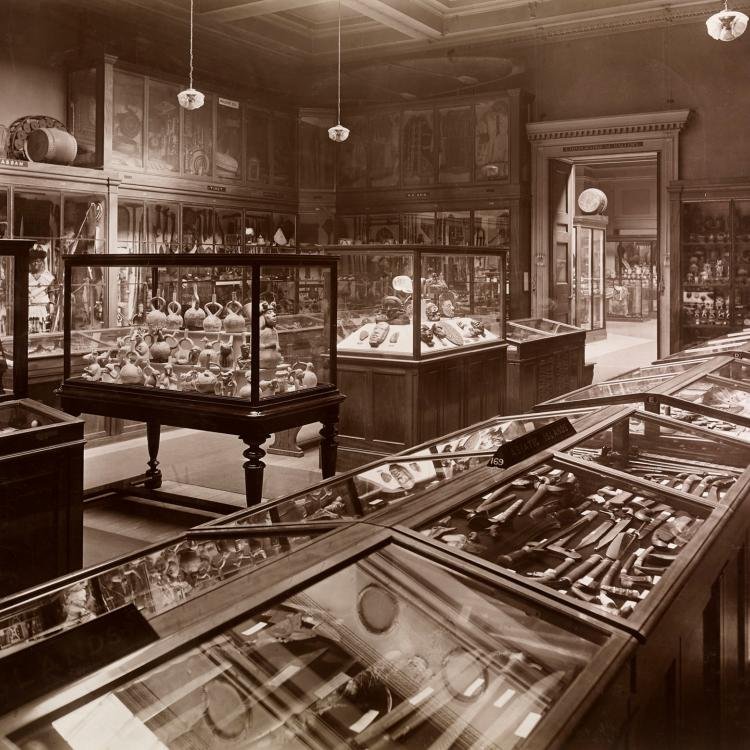In the Wonder Rooms
Nothing is more beautiful than to know all. — Athansius Kircher
ROME, 1651 — Stepping from streets of superstition, searchers enter a world of knowledge, a world of wonder. Inside several soaring rooms, every corner and cubicle is packed with “curious and precious things.”
Over here are the bones of giants, over there an organ that plays bird songs. “Snakestones” from India are said to draw venom from a bite. And dozens stand before the statues of an eagle and a lobster, waiting for them to vomit.
The world was hardly with us then. Science was called “natural philosophy,” and in these decades shortly after Galileo died under house arrest, reason seemed no match for dogma. Only the wealthy owned even a single book. Truth was what your local priest declared it to be, and wonder could get you in trouble.
Yet here, in the Musaeum Kircheranium, the world’s wonders were gathered under a single roof, and “Truth” was on display. In the coming decades, such “museums” would be found throughout Europe.
Though they contained as much nonsense as fact, the modern world owes much to the Wunderkammern. Throughout the 17th and 18th centuries, when science was struggling to become a “revolution,” these “cabinets of curiosities” offered the possibility of knowing everything there was to know. And then some.
By the early 1700s, Wunderkammern were found in Rome, Innsbruck, London, Prague, Copenhagen, and the upstart city of St. Petersburg. Tens of thousands came to marvel at wonders never seen, scarcely imagined. Here was proof that, as that British bard had recently written “there are more things in heaven and earth than are dreamt of in your philosophy.”
The word “cabinet,” in those days, meant not a cupboard but an entire room. And here were entire rooms filled with specimens from every known subject of study. Natural history, geology, archaeology, astronomy, historical relics, and more were laid out to boggle the mind.
Small drawers opened to reveal bones, skins, and other specimens. Stuffed birds and lizards hung from overhead arches, leaving visitors to stroll and gawk. “Learned entertainment” was the common goal, but each Wunderkammer had its specialties.
Peter the Great’s Kunstkamera (above)specialized in human deformities. To combat fear and superstition, the Russian Tsar collected “freakish” specimens. Two-headed goats, snakes, and babies born with birth defects were displayed in glass jars. These were not “monsters,” the Tsar wanted his people to know, but works of nature.
In London, Sir Hans Sloane was more encyclopedic. Sloane collected plants, animals, fish, flowers, shells. . . Sloane’s collection also included artifacts taken from the exotic natives of North America. But the largest and most famous cabinet was the work of “the last man who knew everything.”
In the age of Galileo and Descartes, Athanasius Kircher was more famous any of his reason-bound contemporaries. Kircher, a Jesuit scholar and teacher at the College of Rome, was, one biographer wrote, “a champion of wonder.” Interested in everything, he studied languages, researched magnetism, taught math and philosophy, and was once lowered into the crater of Mount Vesuvius to learn how volcanoes work.
Kircher founded his “musaeum” at the College of Rome in 1651. There had been smaller cabinets, but nothing like this. Along with the eagle and lobster statues that actually vomited, his collection included whirring machines, mirrors that displayed floating ghosts, and wooden “arks” that explained everything from Egyptian heiroglypics to miracles found only in China. The musaeum’s first catalog, published in 1678, unfolds like a Baroque Whole Earth Catalog, if you can read Latin.
For a full century, there seemed no end to the wonders of the Wunderkammern. Yet truth was slowly putting on its boots. Shortly after Kircher’s death, scholars began to investigate the many claims in his 30+ books. Kircher, they discovered, was “highly susceptible to suggestion.” At least half his wonders turned out to be fabrications or hoaxes he never suspected. And the rest?
Wunderkammern were undone by the Scientific Revolution and the Enlightenment. Seeking patterns of knowedge rather than oddities, Europe’s better minds thought better of these curious collections of everything. Science had to be factual, based on evidence these museums generally lacked.
Many of the collections were dispersed to private hands, but Sir Hans Sloane’s hoardings became the basis for the British Museum. Others, including Peter the Great’s Kunstkamera, are still open for viewing. And in America?
If you’re ever in the vicinity of Culver City, California, drop by the Museum of Jurassic Technology. In just a few small rooms, museum founder and MacArthur genius David Wilson has captured the spirit of the Wunderkammern.
Wandering through “Mr. Wilson’s Cabinet of Wonders,” some 25,000 visitors a year never know what to believe. Those letters to astronomers at the Mount Wilson observatory seem real enough but what about the “stink ant of Cameroon” that bores into the brain? Here’s an exhibit on Athansius Kircher, but can you trust this fruit stone carving?
As pre-cursors of today’s museums, the few remaining Wunderkammern are themselves museum pieces. And if wonder seems as endangered as in the days of dogma there’s always the Internet. The web, especially Youtube, has been called our modern “cabinet of curiosities,” even if we know the danger of trusting whatever wonders we find there.
Perhaps we shall never know the beauty of “knowing it all.” “The world,” Kircher noted, “is bound in secret knots,” and the joy must come in curiosity alone.











